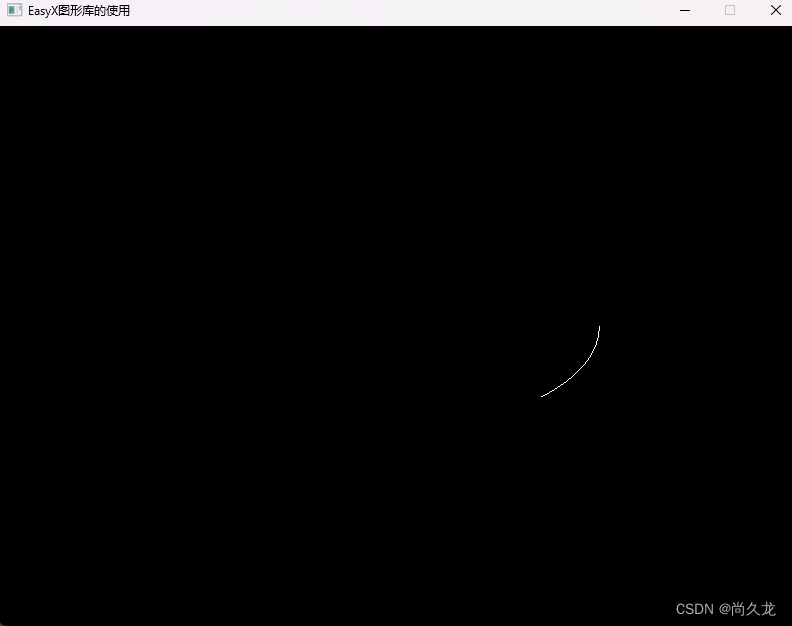按照图上的步骤,安装easyx图形库。

接下来看代码:
#include<easyx.h>
#include<stdio.h>
#define width 800
#define height 600
int main()
{
initgraph(width, height); // 初始化窗口(宽度, 高度) (单位像素)
setorigin(width/2, height/2); // 设置逻辑原点为窗口中心
setaspectratio(1, -1); // 设置xy坐标轴(x:1,y:-1)代表y翻转, x不动
circle(0, 100, 100); // 画一个圆(x:0,y:100的位置,半径为100)
getchar(); //阻断一下程序,防止窗口一闪而过。
closegraph(); // 关闭窗口
return 0;
}物理坐标在窗口的左上角是0,0的位置,但是我们使用的是逻辑坐标,所以要设置逻辑坐标原点的位置:setorigin(width/2, height/2); // 设置逻辑原点为窗口中心
之后的x方向是从左向右的,y的方向是从上到下的,不符合我们上学是的看图策略,y方向要从上到下,所以要设置y轴方向:setaspectratio(1, -1); // 设置xy坐标轴(x:1,y:-1)代表y翻转, x不动。
接下来就是画圆了:circle(0, 0, 100); // 画一个圆(x:0,y:0的位置,半径为100)如下图所示:
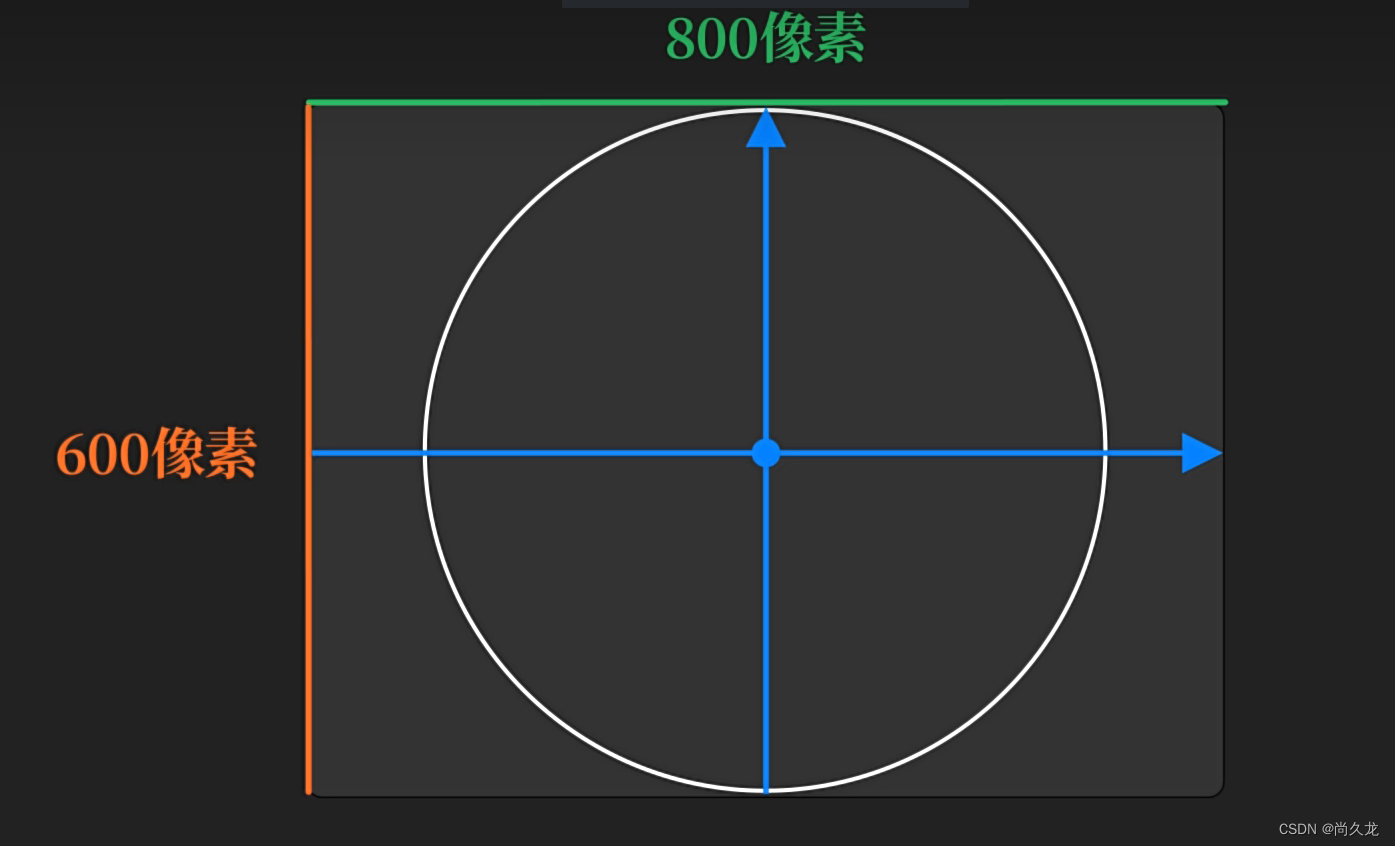
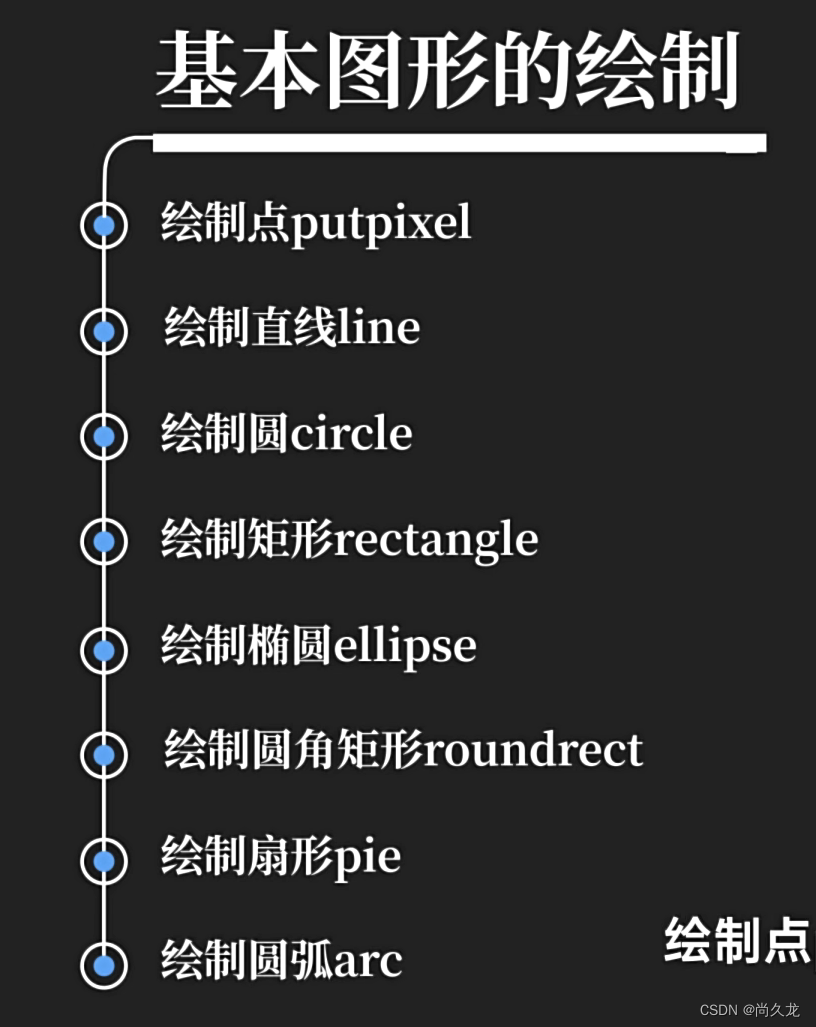
下面是画4个点:
#include<easyx.h>
#include<stdio.h>
#define width 800
#define height 600
int main()
{
initgraph(width, height); // 初始化窗口(宽度, 高度) (单位像素)
setorigin(width / 2, height / 2); // 设置逻辑原点为窗口中心
setaspectratio(1, -1); // 设置xy坐标轴(x:1,y:-1)代表y翻转, x不动
putpixel(100,100, RED); //画一个点(x:100, y:100, 红色)
putpixel(100, -100, YELLOW); //画一个点(x:100, y:-100, 黄色)
putpixel(-100, -100, GREEN); //画一个点(x:-100, y:-100, 绿色)
putpixel(-100, 100, BLUE); //画一个点(x:-100, y:100, 蓝色)
getchar();
closegraph();
return 0;
}
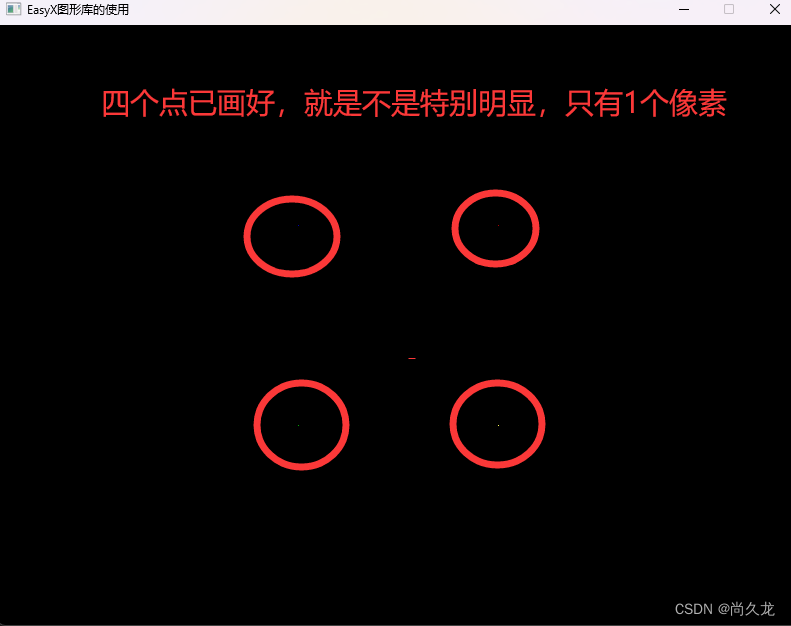
根据上面的学习,接下来绘制1000个随机的点:
#include<easyx.h>
#include<stdio.h>
#define width 1200 // 窗口宽度
#define height 960 // 窗口高度
#include<time.h>
int main()
{
srand((unsigned int)time(NULL));
initgraph(width, height); // 初始化窗口(宽度, 高度) (单位像素)
setorigin(width / 2, height / 2); // 设置逻辑原点为窗口中心
setaspectratio(1, -1); // 设置xy坐标轴(x:1,y:-1)代表y翻转, x不动
int i = 0;
for (i = 0; i < 1000; i++) // 绘制1000个点,位置随机
{
int x = rand() % (width + 1) - width / 2;
int y = rand() % (height + 1) - height / 2;
putpixel(x, y, GREEN); //画一个点(x:100, y:100, 红色)
}
putpixel(100, -100, YELLOW); //画一个点(x:100, y:-100, 黄色)
putpixel(-100, -100, GREEN); //画一个点(x:-100, y:-100, 绿色)
putpixel(-100, 100, BLUE); //画一个点(x:-100, y:100, 蓝色)
getchar();
closegraph();
return 0;
}
line(起点x,起点y,终点x,终点y):
画线:
#include<easyx.h>
#include<stdio.h>
#define W 900 // 窗口宽度
#define H 600 // 窗口高度
int main()
{
initgraph(W, H);
setaspectratio(1,-1);
setorigin(W / 2, H / 2);
line(-200, 200, 200, -200); // 从坐标-200, 200 到坐标200, -200画一条线
getchar();
closegraph();
return 0;
}
接下来用画圆函数,画一个靶心:
#include<easyx.h>
#include<stdio.h>
#define W 900
#define H 700
int main()
{
initgraph(W, H);
setorigin(W/2,H/2);
setaspectratio(1, -1);
int i = 0;
for (i = 10; i <= 300; i += 10)
{
circle(0, 0, i);
}
getchar();
closegraph();
return 0;
}
接下来学习绘制矩形函数:
rectangle(左上角x坐标,左上角y坐标,右下角x坐标,右下角y坐标)

#include<easyx.h>
#include<stdio.h>
#define W 800
#define H 600
int main()
{
initgraph(W, H);
setorigin(W / 2, H / 2);
setaspectratio(1, -1);
rectangle(-200, 200, 200, -200);
getchar();
closegraph();
return 0;
}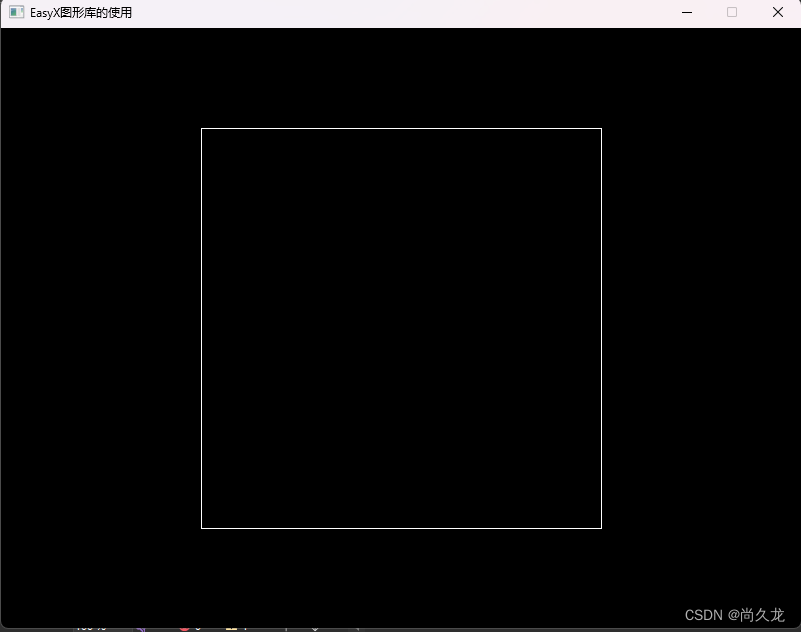
下面学习绘制椭圆函数:
ellipse(左上角x坐标,左上角y坐标,右下角x坐标,右下角y坐标)

#include<easyx.h>
#include<stdio.h>
#define W 800
#define H 600
int main()
{
initgraph(W, H);
setorigin(W / 2, H / 2);
setaspectratio(1, -1);
ellipse(-200, 100, 200, -100);
getchar();
closegraph();
return 0;
}
下面学习绘制圆角矩形:

圆角矩形的四个圆角实际上是由4个椭圆构成的:

#include<easyx.h>
#include<stdio.h>
#define W 800
#define H 600
int main()
{
initgraph(W, H);
setorigin(W / 2, H / 2);
setaspectratio(1, -1);
roundrect(-200, 100, 200, -100, 200, 100);
getchar();
closegraph();
return 0;
}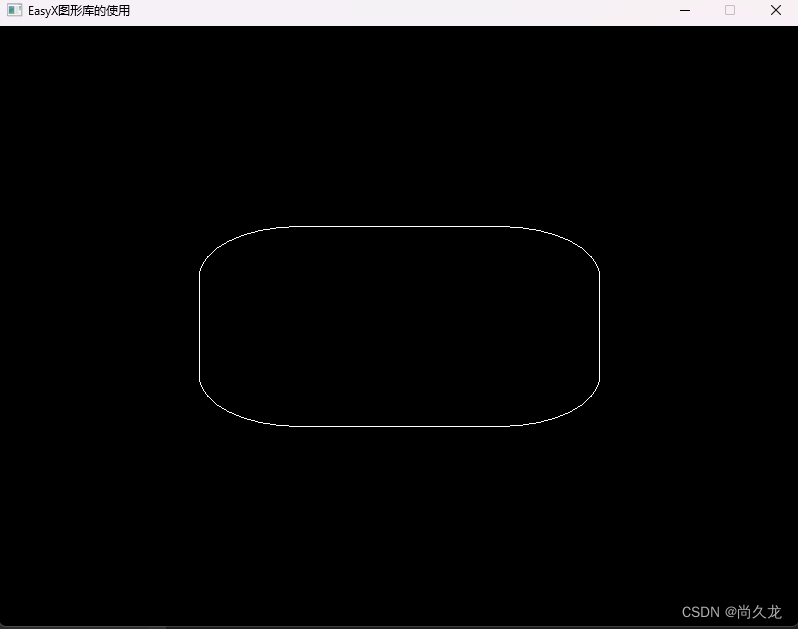

绘制扇形函数:
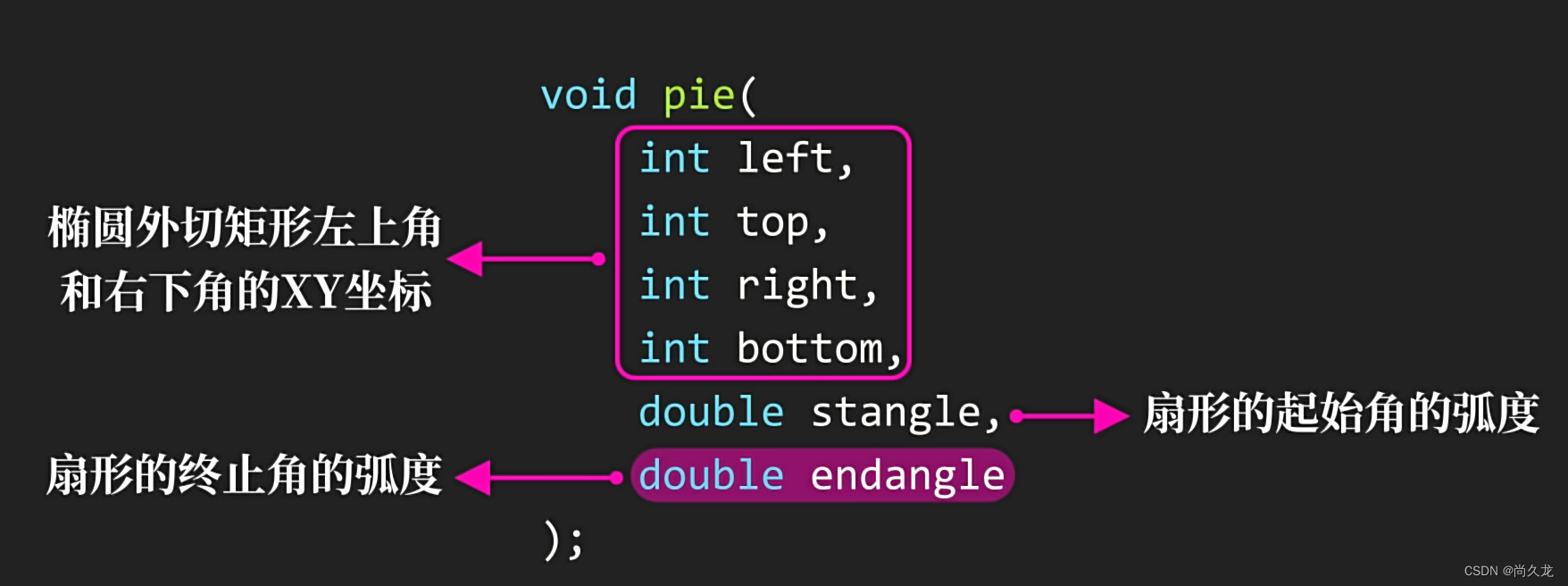
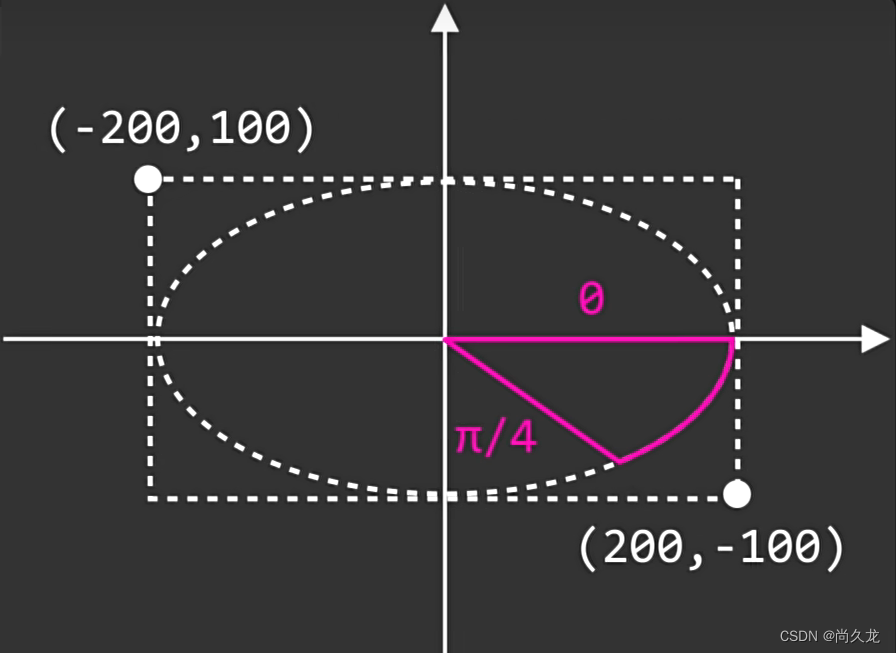
#include<easyx.h>
#include<stdio.h>
#define W 800
#define H 600
#define PI 3.14
int main()
{
initgraph(W, H);
setorigin(W / 2, H / 2);
setaspectratio(1, -1);
pie(-200, 100, 200, -100, 0, PI/4);
getchar();
closegraph();
return 0;
}
绘制圆弧函数:

#include<easyx.h>
#include<stdio.h>
#define W 800
#define H 600
#define PI 3.14
int main()
{
initgraph(W, H);
setorigin(W / 2, H / 2);
setaspectratio(1, -1);
arc(-200, 100, 200, -100, 0, PI / 4);
getchar();
closegraph();
return 0;
} 